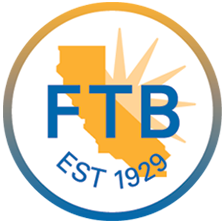
The world of nonprofit accounting is evolving. And one of the most significant changes in is the adoption of the Current Expected Credit Loss (CECL) model. Originally designed for financial institutions, CECL reporting for nonprofits is now becoming an essential part of financial stewardship. Understanding the latest updates and compliance strategies is crucial for nonprofits looking to stay ahead.
What is CECL Reporting for Nonprofits?
CECL is a new accounting standard issued by the Financial Accounting Standards Board (FASB). Unlike the previous “incurred loss” model, CECL requires organizations to estimate expected credit losses over the life of financial assets and recognize them earlier.
For nonprofits, this primarily affects pledges receivable, loans receivable (if applicable), and certain other financial instruments. CECL reporting for nonprofits means organizations must take a more forward-looking approach. As a result, they must estimate losses based on historical data, current conditions, and reasonable forecasts.
Key Updates Nonprofits Should Know
1. Scope Expansion
CECL doesn’t just apply to banks. Nonprofits holding financial assets like grants, contributions receivable, and certain loan portfolios now fall within the scope. Understanding which assets are affected is the first step toward compliance.
2. Effective Dates
For most nonprofit organizations, CECL became effective for fiscal years beginning after December 15, 2022. If your organization hasn’t fully implemented CECL reporting yet, now is the time to act.
3. Estimation Techniques
FASB allows flexibility in how nonprofits can estimate credit losses. Methods such as historical loss rate analysis, discounted cash flow models, and probability of default models are acceptable. But only as long as they are reasonable, supportable, and consistently applied.
4.Disclosures and Transparency
CECL reporting for nonprofits emphasizes greater transparency. Organizations must disclose their methodologies, assumptions, and changes in the credit loss estimates year over year.
5. Impact on Financial Statements
Adopting CECL may initially increase your allowance for credit losses, affecting net assets. Boards, donors, and other stakeholders should be made aware of these changes to avoid misinterpretation.
Compliance Tips for Nonprofits
Inventory Your Financial Assets
Start by identifying all financial assets that fall under CECL. This includes pledges receivable, notes receivable, and possibly certain investment securities.
Develop a Reasonable Methodology
Select a loss estimation method that aligns with your nonprofit’s size, complexity, and asset portfolio. Smaller organizations may prefer simpler models like historical loss rates.
Gather Historical and Current Data
Build your estimates using a blend of historical information and current market conditions. Document your assumptions carefully.
Conclusion
Although CECL reporting for nonprofits may seem complex, with careful planning and a proactive approach, compliance is achievable. By understanding the new standards, nonprofits can ensure their financial reporting remains transparent, accurate, and aligned with donor expectations.
Nonprofits that prioritize CECL readiness will not only meet compliance requirements but also demonstrate robust financial leadership. This is a critical factor in sustaining mission-driven success.
You may also enjoy reading: Should You Keep or Discard Tax Records?







